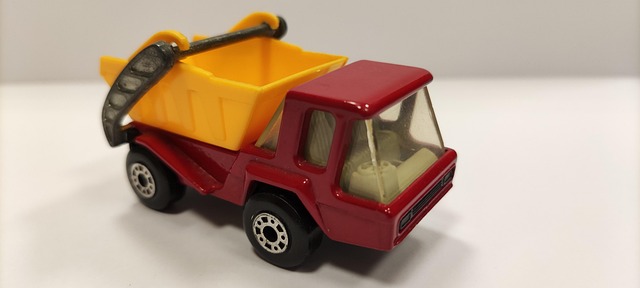Looking to register your car in California? This comprehensive guide walks you through the process, from understanding key requirements to gathering essential documents. We highlight the importance of a correct Vehicle Identification Number (VIN) and provide step-by-step instructions for visiting your local DMV office or utilizing online services efficiently. Ensure accuracy with our recommended dmv vin verifier tools for a smooth registration experience in California.
- Understand California Car Registration Requirements
- Gather Necessary Documents for Registration
- Visit Your Local DMV Office or Use Online Services
- Verify Vehicle Identification Number (VIN) Accurately
- Complete and Submit the Registration Application Form
Understand California Car Registration Requirements

Before registering your car in California, it’s crucial to understand the state’s specific requirements. The California Department of Motor Vehicles (DMV) mandates that all vehicles operating within the state be properly registered and have a valid inspection certificate. This process involves verifying the vehicle’s identity using its unique Vehicle Identification Number (VIN). A reliable VIN verifier, often provided by the DMV or third-party services, ensures that your car matches the details on file with the manufacturer.
In California, a car registration typically includes proof of insurance, completion of a title transfer if applicable, and payment of associated fees. For new vehicles, you may need to schedule an inspection at a designated station. Alternatively, some services offer mobile VIN inspections and verifications, providing convenience by coming to your location for a hassle-free experience.
Gather Necessary Documents for Registration

Before heading to the DMV for registration, make sure you have all the essential documents ready. The California Department of Motor Vehicles (DMV) requires a number of items during the car registration process. Among them, the vehicle identification number (VIN) is crucial. You can obtain this unique code from your car’s registration or title document. Additionally, a valid driver’s license and proof of insurance are mandatory.
For a seamless registration experience, consider using a DMV VIN verifier to cross-reference your VIN with authorized databases. This step ensures the vehicle’s history is clean and helps in preventing fraud. Alternatively, you can conduct a mobile VIN inspection or verification using apps that provide instant access to detailed vehicle information. Having these documents prepared will save you time and make the registration process much smoother.
Visit Your Local DMV Office or Use Online Services

Visiting your local DMV office or utilizing online services are two convenient ways to start the car registration process in California. If you opt for the former, be prepared for a more traditional approach where you’ll need to fill out paperwork and provide essential documents, including proof of ownership and identification. The DMV staff will guide you through the steps, which include verifying your vehicle’s VIN (Vehicle Identification Number) using a state-approved method, typically done via a DMV vin verifier.
For a more modern and often faster alternative, many services now offer mobile vin verification or mobile vin inspection, allowing you to complete much of the initial work remotely. This method involves inputting your VIN into an online system that checks its authenticity and provides relevant information, making it easier for both you and the DMV to verify the vehicle’s history before proceeding with registration.
Verify Vehicle Identification Number (VIN) Accurately

When preparing to register your car in California, one of the crucial initial steps is ensuring your Vehicle Identification Number (VIN) is accurate. This unique 17-character code is vital for identifying your vehicle and is used by the California Department of Motor Vehicles (DMV) during the registration process. A simple yet effective way to verify this number is through a dmv vin verifier, which can be done online or via dedicated apps, ensuring no errors are introduced manually.
For added convenience, consider opting for a mobile vin verification service that allows you to cross-check your VIN against official databases quickly and efficiently. This step ensures not only the accuracy of your vehicle’s identification but also saves time during the registration process. A correct VIN inspection is fundamental to a smooth car registration experience in California.
Complete and Submit the Registration Application Form

To register your car in California, you’ll need to complete and submit the Registration Application Form, available at your local DMV (Department of Motor Vehicles) or online. This form requires accurate and detailed information about your vehicle, including its make, model, year, and unique identifier—the Vehicle Identification Number (VIN). A reliable method to obtain this VIN is through a DMV vin verifier, which ensures the data’s accuracy.
When filling out the form, be sure to include all necessary documentation, such as proof of ownership, insurance, and identification. You can also opt for a mobile vin inspection or mobile vin verification service, which allows you to complete this process remotely by providing your VIN to a professional who will cross-reference it with official databases.
Registering a car in California is a straightforward process, provided you meet all the requirements and have the necessary documents. By understanding the steps outlined in this article, from gathering essential paperwork to completing the registration application form, you can efficiently navigate the process at your local DMV or through online services. Always ensure your Vehicle Identification Number (VIN) is accurately verified using reliable tools like a dmv vin verifier, as it’s a crucial step to avoid any future issues. With these simple steps, you’ll have your car registered in no time, ensuring compliance with California’s regulations.



